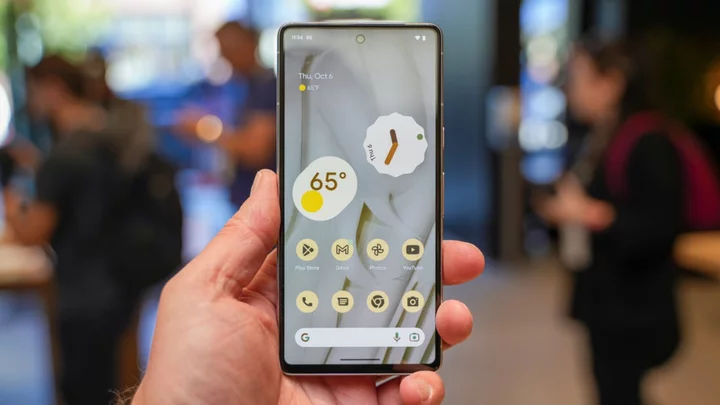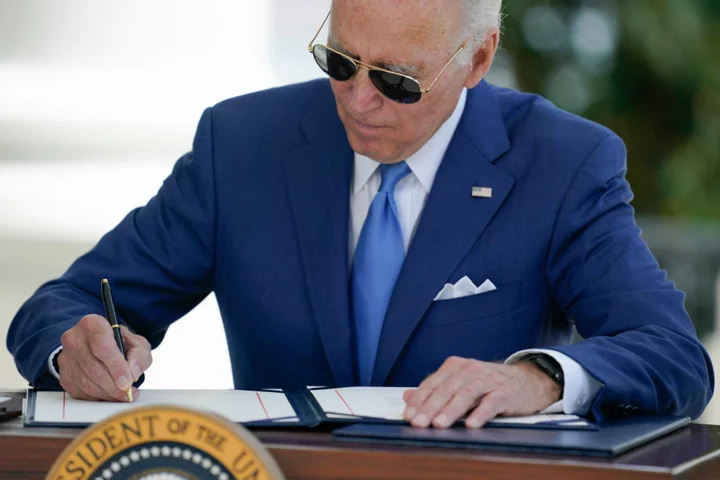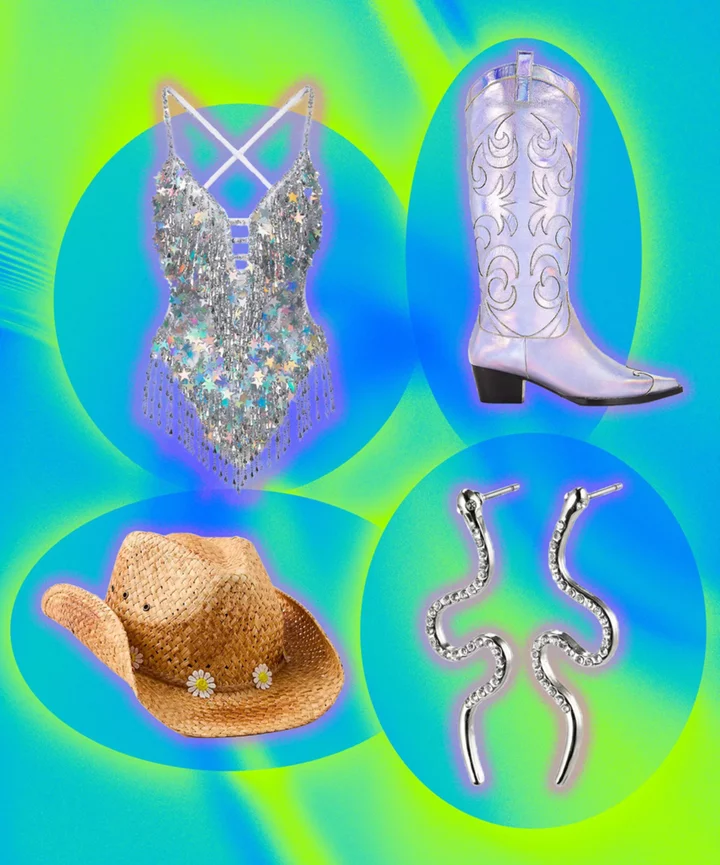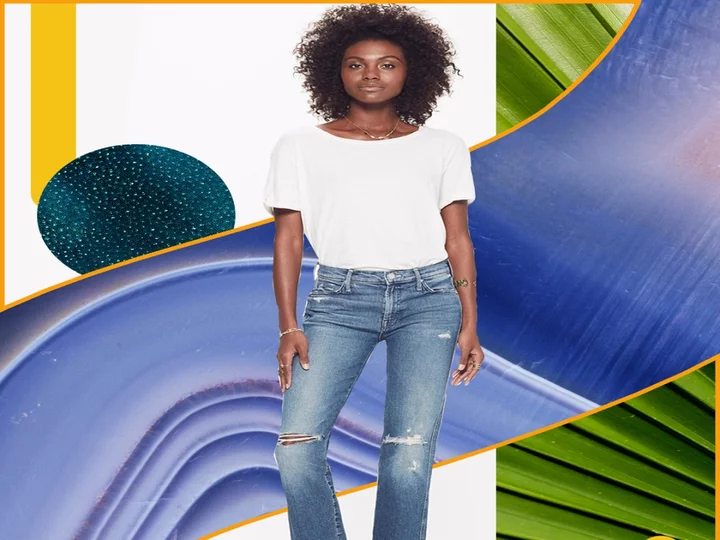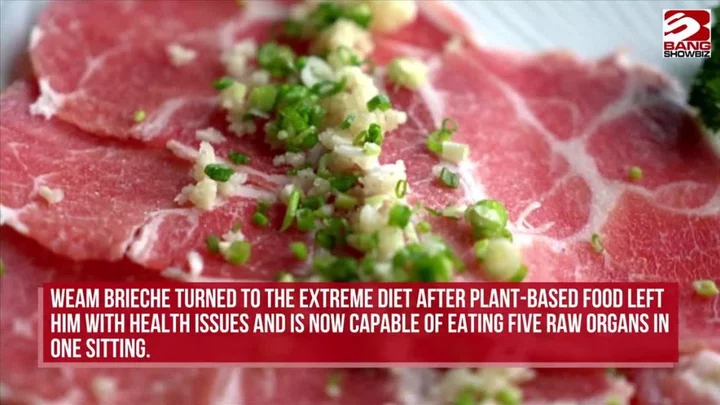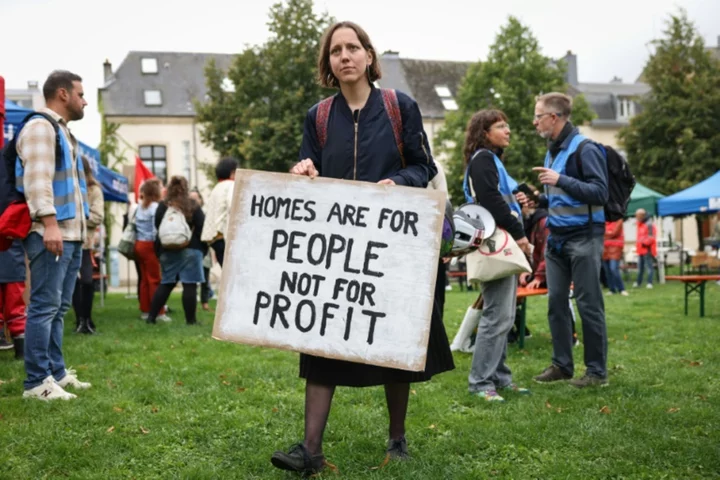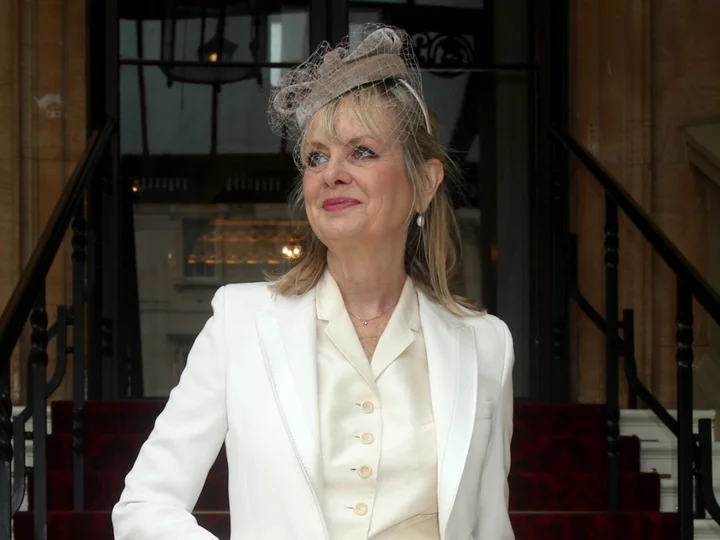Director Boots Riley's I'm a Virgo is the most radical, inventive show on television right now. These qualities apply not only to its plot — which follows 13-foot-tall giant Cootie (Jharrel Jerome) on a journey of self-discovery through Oakland — but also to its imagery.
From comic book-style thought bubbles and nihilistic cartoons to anti-capitalist dream sequences and Cootie's impressive stature, I'm a Virgo is a visual feast — one that presented its team with a fair amount of exciting challenges.
SEE ALSO: 'I'm a Virgo' review: Boots Riley's larger-than-life series is a brilliant, bizarro adventure"Reading the scripts, we knew right away that this was something different," VFX supervisor Jamie Barty told Mashable in a video interview. Barty is a part of VFX studio FuseFX, which helped bring the weird world of I'm a Virgo to life, blending CG and digital compositing with the practical effects achieved in-camera during filming. He broke down the tactics used to establish Cootie's scale, as well as how he and the FuseFX team approached the more CG-heavy scenes.
How does I'm a Virgo play with scale?
Behind-the-scenes of the puppetry used in "I'm a Virgo." Credit: FuseFXIn centering on a giant, I'm a Virgo set a 13-foot-tall challenge for its VFX team. As Riley himself has said, the show did not use CG to make Cootie larger than the other characters. Instead, it used practical in-camera techniques as much as possible, such as forced perspective, miniatures, and puppets.
Barty was less involved in this aspect of the process, gesturing instead to I'm a Virgo's on-set VFX supervisor Todd Perry. Throughout pre-production and shooting, Perry used math to figure out how to achieve the major scale differences between Cootie and his scene partners in-camera.
When using forced perspective, for example, this meant mapping out where actors needed to be in each shot. "In order to have Cootie look bigger through the camera, you need Jharrel to be closer to the camera — like twice as close as everybody else," said Barty. "That also means he needs to be on a platform in front of the camera, because you're scaling him to the point of the camera."
SEE ALSO: Video: Boots Riley's 'I'm A Virgo' is an adventure of mythical proportionsOn top of bringing Jerome closer to the camera and placing him on a platform, the forced perspective approach presented other challenges. Jerome's scene partners had to act to someone who wasn't spatially in front of them, meaning there had to be extensive rehearsals to nail their eyelines. Scenic elements Cootie interacts with also had to be scaled appropriately. For example, when he sits on the porch of his regular-sized house, he's really sitting on a scaled-down porch. "It blows your mind when you see it through the camera," said Barty. "It's just perfect."
On top of forced perspective, I'm a Virgo also worked with puppets and miniatures. According to Barty, every character had a miniature version of themselves — complete with accurate costumes and sculpted faces — for Cootie to interact with. When we see him kiss Flora (Olivia Washington), he's actually kissing a miniature of her. Elsewhere, when characters had to interact with Cootie, they acted against a large Cootie puppet. The puppet also helps in fight scenes, such as a sequence where Cootie gets in a fight outside a nightclub. His attackers swarm and climb him, but in shooting, they were actually swarming a puppet.
From there, Barty and FuseFX would help augment the puppet's movements and features to create the illusion of reality. "The puppets' faces didn't animate in real life; there were no animatronics involved. So we would do a head replacement and put Jharrel on top of the puppet, and then replace one arm as well so that it's flailing a bit more," Barty said.
How did I'm a Virgo approach its most CG-heavy scenes?
Behind-the-scenes of "I'm a Virgo"s sideshow scene. Credit: FuseFXWhile I'm a Virgo certainly used many in-camera techniques to achieve its impressive visuals, it also relied on CG to add detail and realism to puppets and miniatures, or to stitch separate shots into one.
An example of the latter is in the sex scene between Cootie and Flora. "Everything for that sequence was 2D compositing," said Barty. "Just to get everything feeling like it's in the same space, feeling like the characters are the right scale compared to each other, and to get the eyelines correct as well."
The most involved sequence for Barty and FuseFX ended up being the sideshow scene in the very first episode, when Cootie helps his friends execute a number of impressive stunts. While shooting the scene, Jerome sat in a miniature car (driven by miniatures of his friends) on a rotating rig. Barty and his team then had to CG the car wheels to make them turn, CG the ground so it interacted with the wheels, and then remove the crew in the background in order to speed up the rotations of the car. They also added smoke, digital versions of Cootie's friends, and even replaced the car entirely in order for it to be accurately lit.
"You've got this digital car, digital characters in the car, digital tires, digital road, digital environment around it, all the lights, all the smoke, and then Cootie is the only thing left that's real," Barty said. "So a sequence like that ends up being 90% CG, even if that's not how it was planned to begin with. But when you go down that road, and you realize what you need to do to make the sequence exciting, you just do what you have to do to get it there. That was a really fun one to work on."
All episodes of I'm a Virgo are now streaming on Prime Video.


